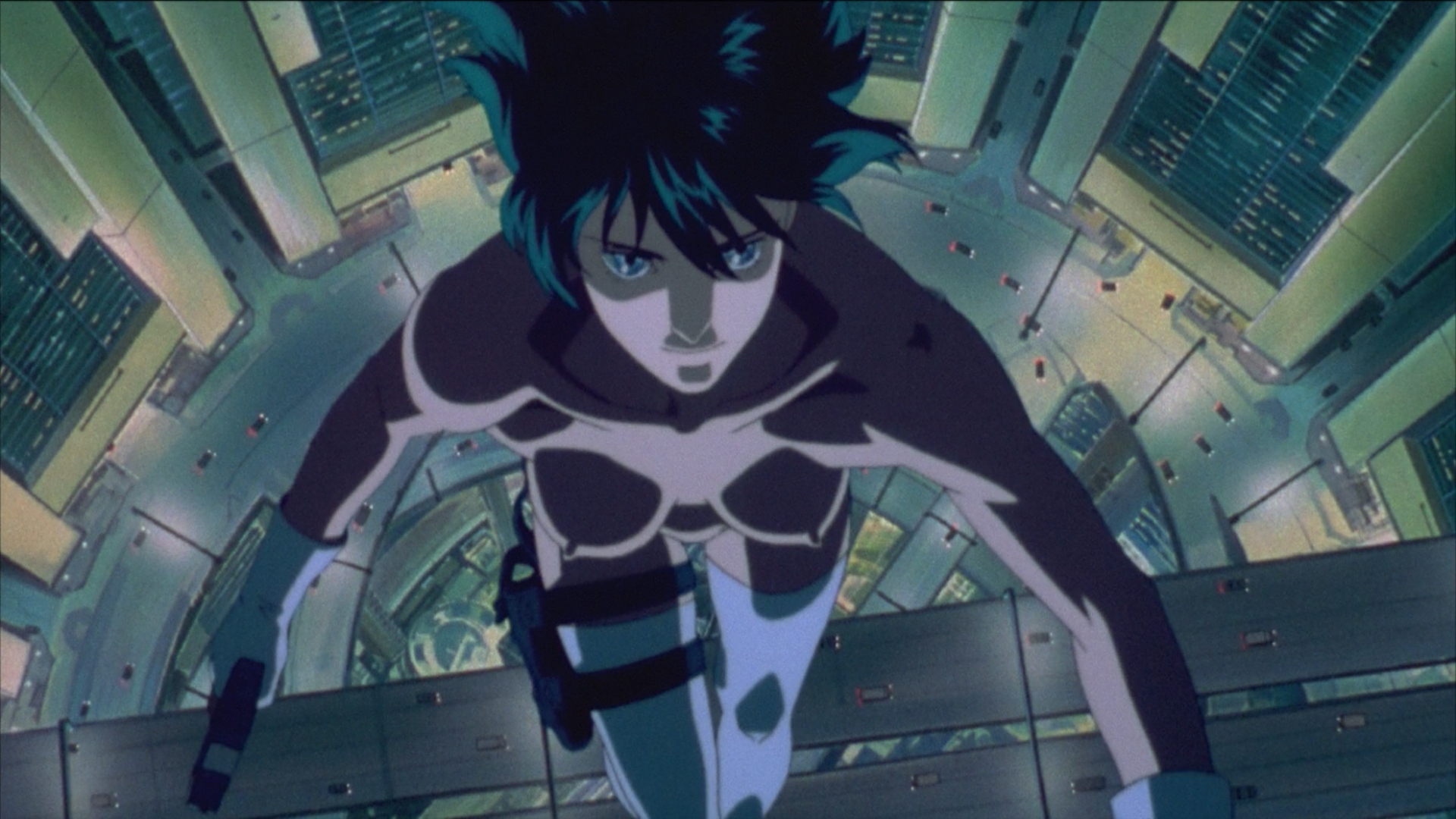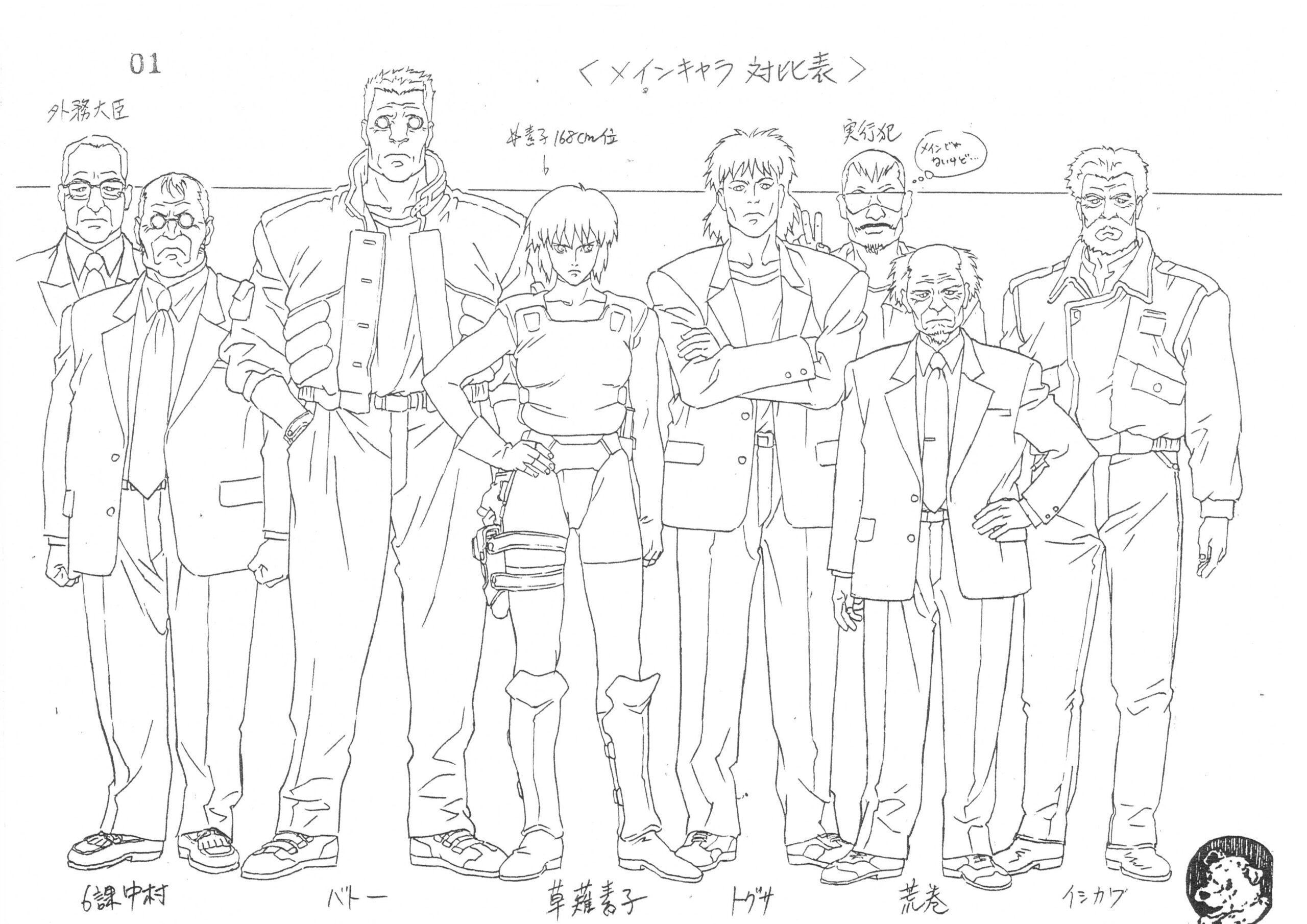
Struggles With Ghost in the Shell, As Encountered by Hiroyuki Okiura -An Animator’s Struggles and Joys- #01
Text: Miho OtobeThe film Ghost in the Shell was the first animated work for the eponymous series. While Mamoru Oshii took the director’s chair for the film, it was Hiroyuki Okiura who took on the role of animation director and character designer. Known throughout the animation industry and also widely among fans for his advanced animation skills, Okiura is stunningly well-composed in his assessment of his own artwork. Here, we sat down for a sincere talk with him about his animation.
#01 Aramaki Was Always a Struggle to Draw
――Was the film Ghost in the Shell your first encounter with the series?
Hiroyuki Okiura (“Okiura” below): Well, all else aside, it was 30 years ago, so my memories aren’t that clear. But before Ghost in the Shell, there was another anime based on another work of Masamune Shirow’s. It was called Black Magic M-66 (an OVA released in 1987), and I co-directed with (Hiroyuki) Kitakubo on it. So after that, Shirow’s manga started to come after me. But I don’t think I had read “tGitS” at the time, still. My impression of the original manga is that foremost, it’s a complex topic. I’m impressed with how well Oshii packed the complexity of the manga into the film Ghost in the Shell in a watchable way by leveraging the situations in the original work.

――What was your impression of Shirow’s artwork?
kiura: Shirow’s artwork has appealing body lines. So much so that I kept a copy of Appleseed or another of Shirow’s manga in one hand while working on Black Magic M-66. There were several points where you can feel Shirow’s focus on fine details, like how races are distinguished in the art, even when the character is sort of what you’d call a bishojo-type of pretty young woman. Also, his way of using wide-angle shots for expressive scenes was rare at the time and felt fresh.
――Did you end up as character designer and animation director on Ghost in the Shell due to your role on Black Magic M-66?
Okiura: For Black Magic M-66, I would look at the storyboards Shirow drew, and I knew his taste in art and characteristics, so the experience had a big impact on me. But as for whether that was why I ended up working on Ghost in the Shell, I don’t think it was connected.
――Mr. Kise was also an animation director on Ghost in the Shell. Have you two known each other long?
Okiura: Kise joined Anime R (an Osaka-based anime production company and animation studio at the time) a bit after I did, so I’ve known him since my teens or so. But even though we were in the same studio, we were on separate teams. I was on (Moriyasu) Taniguchi’s team, and he was on (Hiromi) Muranaka’s team (which went on to become Studio Mu).
――Character designers create things called “character sheets” with views of the character from multiple angles. Animators use those as a basis in their work, so it’s fundamental to the work as a whole. So, what led up to you taking on the role of character designer for Ghost in the Shell?
Okiura: A bit before we made Ghost in the Shell, they made Patlabor 2: The Movie with Oshii directing and Kise as the animation director. I think from there the company wanted to continue onto a new title with that Oshii & Kise team, but Ishikawa (Production I.G’s Chairman Mitsuhisa Ishikawa) told me that Kise said he didn’t want to draw character sheets. Looking back on it now, I can’t really discount the possibility that Ishikawa was just saying whatever might persuade me, though. (Laughter) And personally, I had seen Black Magic M-66 through to the end, in the past, and had had my fill. I wasn’t in a place to take on another round, but in the end, I did take on the job.

――Do you get to where you’ve had your fill of something due to not wanting to just keep drawing similar images?
Okiura: More than that, at the time, my own art had changed a fair bit. By that point, I had evolved toward notes of Jin-Roh: The Wolf Brigade (an anime film released in 2000, on which Okiura worked as a director and character designer), and Ghost in the Shell calls for a bit of what I’d say is a cooler style. So I was worried about whether I could make the shift to it. It’s not that I ever end up drawing things against my wishes. But I’d have to put away what I want to draw in the moment and pull out something I may have wanted to draw in the past, so I wasn’t sure if I could hold together through that.
――What was the deciding factor for you taking the job in the end?
Okiura: I knew Kise would come on as an animator, so I realized he probably wouldn’t even look at my character sheets. (Laughter) That took a bit of the pressure off of me.
――But what Kise said on the topic was, “Okiura’s characters and key frames are challenging. So unsurprisingly, I had my hands full trying to polish my art to Okiura’s level over the time we produced Ghost in the Shell.”
Okiura: He wasn’t the only one with his hands full. All else aside, I just lost the ability to draw the characters after I did the character sheets. Truthfully, I’ve had similar issues with drawing character sheets and then being unable to draw the characters in the designated way in the real anime stage, but it was especially dramatic with Ghost in the Shell.
――Is that because the nuances of the drawings shift when you’re conscious of how they’ll move in an anime?
Okiura: More than that, I think the drawings are just bad.
――That’s a shock to hear… Most anime fans see you as a godlike figure when it comes to animation, so all across Japan they’ll freeze in horror at hearing that.
Okiura: But personally, that’s what I think. There’s no way around it. Aramaki was the biggest struggle of all. I felt like I had done a good job on him in the character sheet, but during the actual animation, I couldn’t draw him the way I wanted at all. Kise draws Aramaki incredibly well, but no matter how many retries I took, I could never get him to look good enough. I don’t regret it, since it feels like I did all I could, but I really just couldn’t draw that character…

――Do you feel like male characters are harder to draw?
Okiura: Personally, I don’t feel like there’s a difference for male or female characters. But there was one time that Ishikawa saw my character sheet for Batou or something, and said, “You can draw men, too?!” I remember that happening. “I can, it just takes a lot of work!” That’s what I wanted to say at the time. (Laughter)
Continued to #02 An Opening Video Saved by Mr. Kise
HIROYUKI OKIURA
Born in 1966. A native of Osaka Prefecture. After hiring on at Anime R, he made his debut as animation director with Star Musketeer Bismark. Made his directorial debut with Jin-Roh: The Wolf Brigade. In addition to winning the Grand Prize for feature films at the New York Int’l Children’s Film Festival for A Letter to Momo, the film he created, directed, and wrote (a first for any Japanese film), he has won numerous other awards, including an award for excellence at the Japan Media Arts Festival, held by Japan’s Agency for Cultural Affairs. In the Ghost in the Shell series, in addition to the film Ghost in the Shell, he served as character designer and animation director for Innocence and handled key frames for Ghost in the Shell: Arise.

